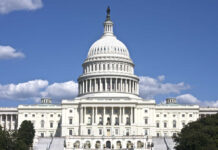
China’s ambitious journey to the stars has taken a giant leap forward as officials recently disclosed their plans to establish their own space station and put Chinese astronauts on the moon by the end of this decade.
China plans to land its own astronaut on the surface of moon by 2030 – the Manned Spaceflight Program Administration of the People's Republic of China (CMSA).#China #Moon pic.twitter.com/BeY51nKpPz
— The Story Teller (@I_am_the_Story) May 29, 2023
The first step in this plan, as explained by the deputy director of the Chinese Manned Space Agency Lin Xiqiang, is a “short stay on the lunar surface and human-robotic joint exploration.” He went on to illustrate the readiness of their space infrastructure and their two annual crewed missions strategy, all part of an elaborate plan to achieve these objectives.
The news came right after the completion of China’s Tiangong space station, which saw its final component attached last November. Despite this achievement, China intends to enhance the station with a fourth module for better scientific research support and improved living and working conditions for the crew.
A new chapter is opening with the launch of three new astronauts aboard the Shenzhou 16 craft. This new team includes a civilian member for the first time, Gui Haichao, a professor at Beijing’s premier aerospace research center. The inclusion of non-military personnel is a departure from China’s past, as all earlier crew members were part of the People’s Liberation Army.
Expressing optimism, mission commander Jing Haipeng claimed this mission represented a “new stage of application and development” for China’s space program.
Having achieved its first manned space mission in 2003, China’s space endeavors have grown in strength, especially after it built its own space station following its exclusion from the International Space Station due to US concerns about China’s military involvement in its space programs.
China and the US, as the world’s top two economies and competitors for global influence, are viewed as space rivals. While their political systems are vastly different, both nations seem to share a common ground in terms of space exploration.
The idea of placing astronauts on the moon has been explored by both countries, raising questions about territorial rights and interests on the lunar surface. By 2025, NASA plans to return humans to the moon, specifically targeting the south pole, where vast reservoirs of frozen water are believed to exist.
Despite these tensions, China is open to international collaborations, though these have primarily been restricted to scientific research due to US legislative barriers limiting cooperation between the two countries’ space programs.
Li Yingliang, the technology director of the Chinese crewed space flight organization, voiced regret about these restrictions, stating China’s desire for increased international cooperation, including with the United States, as long as the ultimate goal is peaceful space utilization.




























